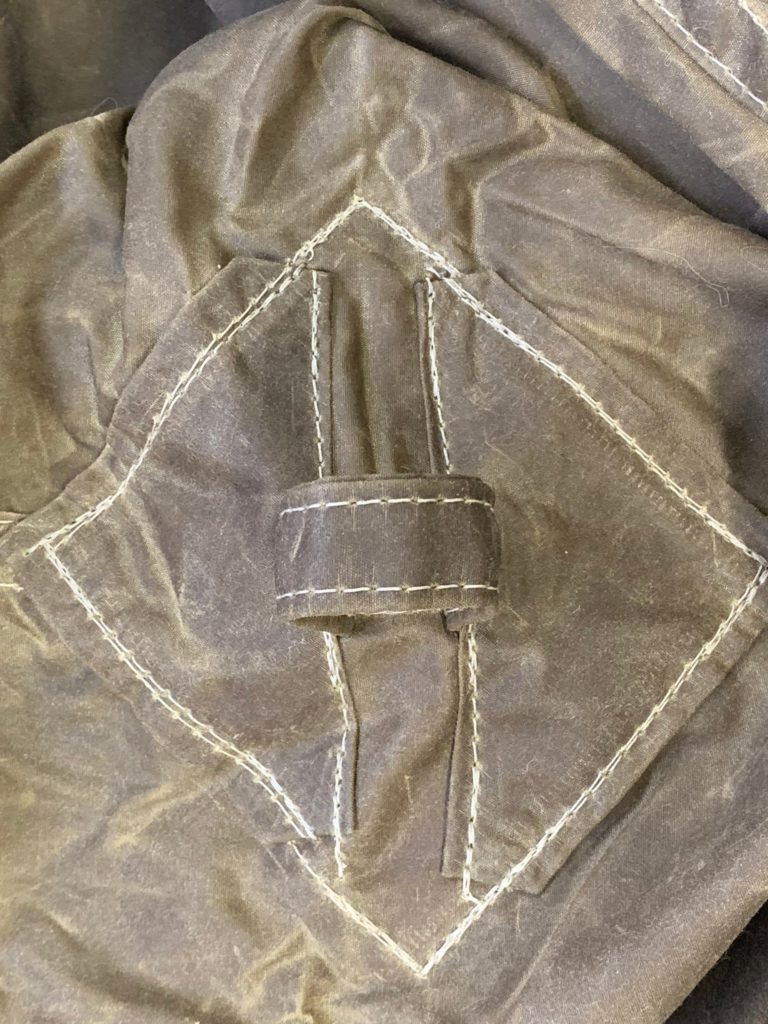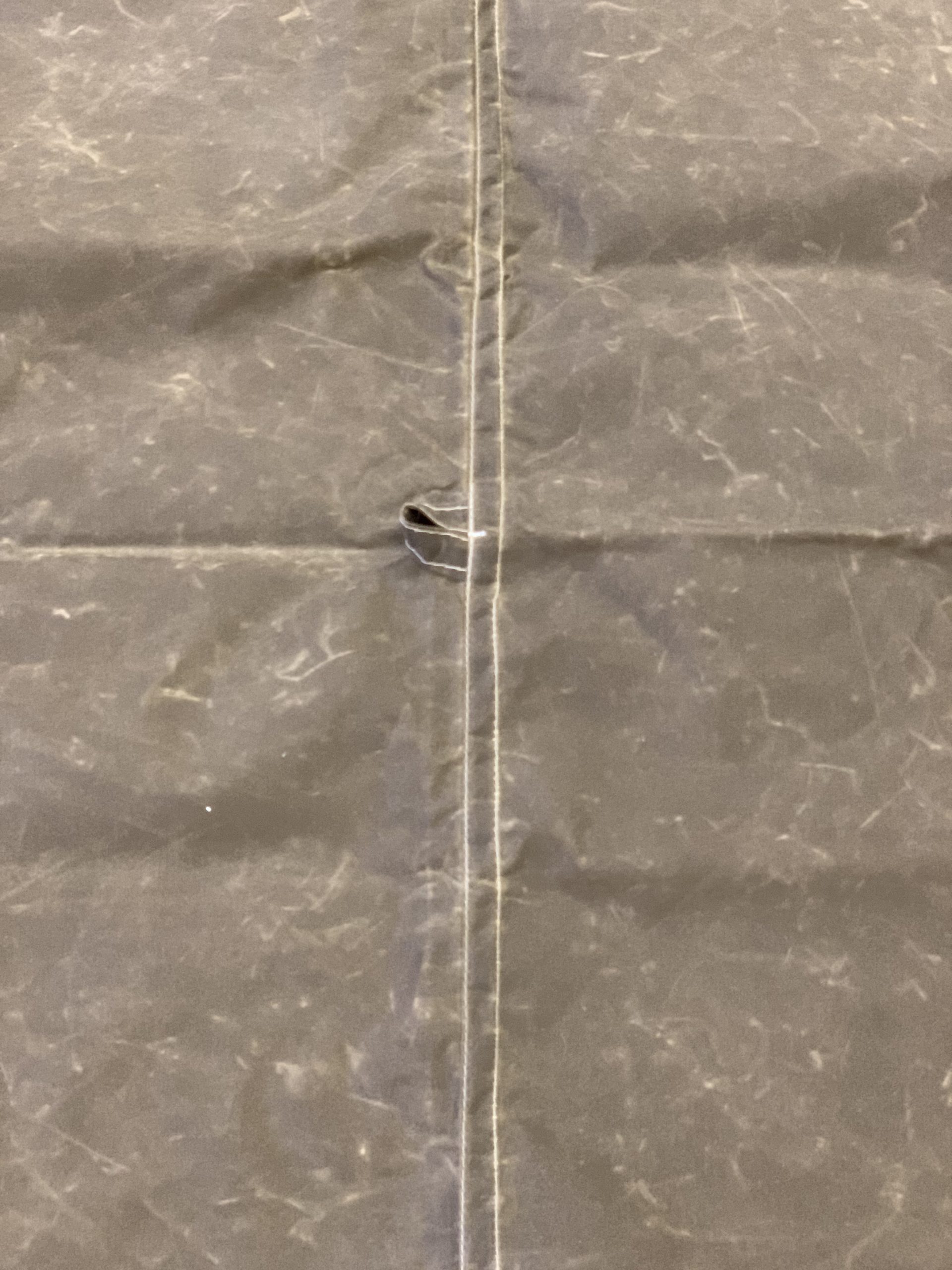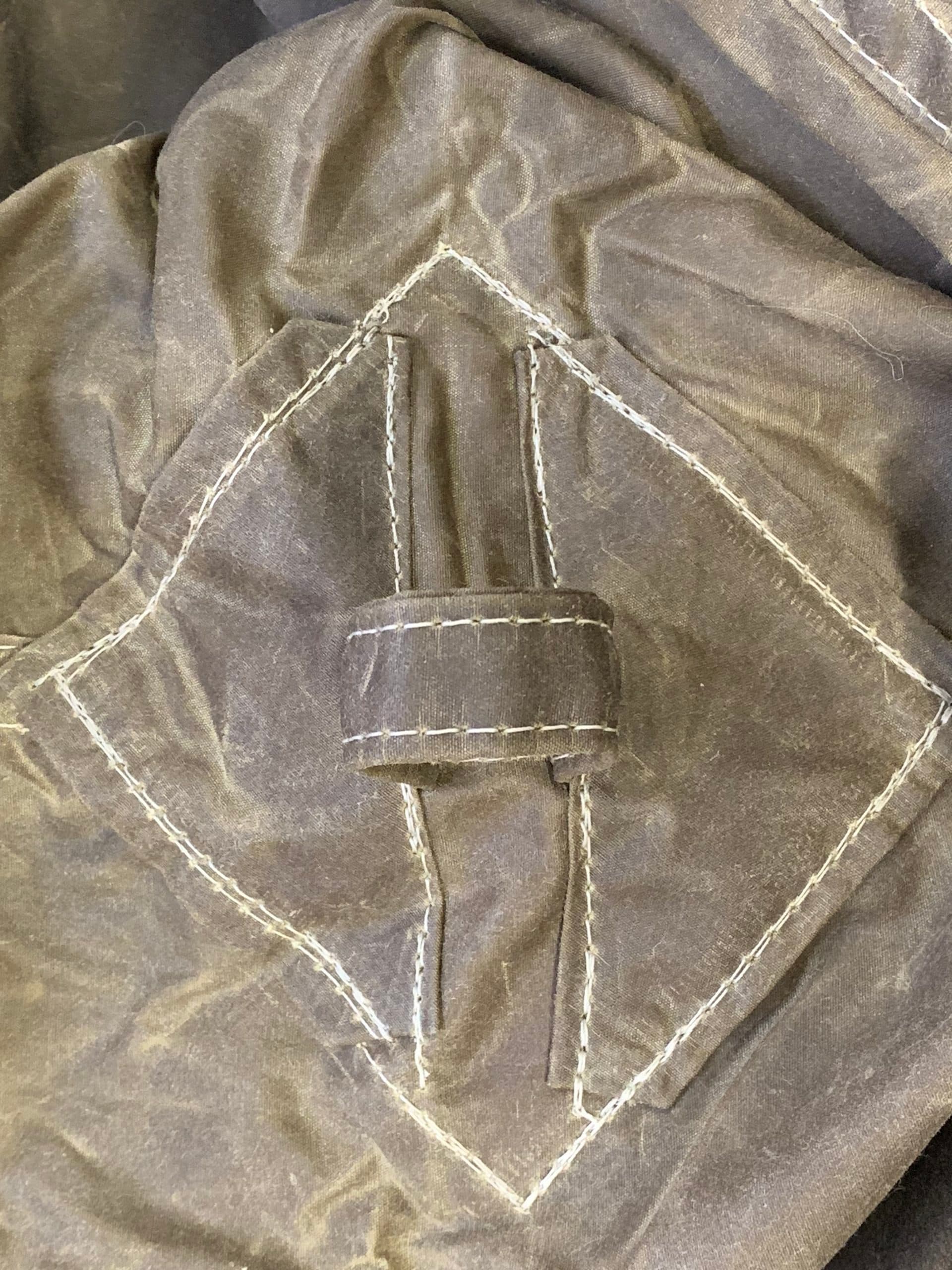
What is a reinforced center loop? When folks are contemplating the purchase of an oilskin tarp they often ask about the option for a reinforced center loop.
All of our oilskin (and even our less commonly purchased canvas) tarps come with a row of loops spaced evenly down each seam. On every tarp under 12 feet, this means 3 loops on the center seam, as it is the only seam. On 12’ and 15’ tarps, loops are put into each of the 3 seams and are spaced evenly, 3 each seam on the 12’ and 5 each seam on the 15’. When we refer to the center loop, we’re talking about the one in the center of the tarp, regardless of the tarp size.

The loops down the center seam are often relied upon for running a ridge line or attaching to a ridge pole, but there are a number of setup configurations that rely on the center loop more heavily. When setting up in a diamond or Forester pattern, for example, the center loop may be guyed out to a nearby tree to prevent sag. If this is going to be your primary configuration, we’d actually suggest our Diamond Shelter as it’s reinforced differently to reduce stretching on the bias. The center loop is also sometimes guyed out when the tarp is used just as a lean-to, again to prevent sag in the middle. It certainly can see its share of use.

And that brings us to the question, why not always reinforce the center loop? As with so many things, there is, of course, a tradeoff. When we put the standard center loop into the seam, we aren’t putting any additional stitches in the oilskin. Every time you add a stitch, you’re putting holes in the material. Yes, tiny little holes filled with thread, but holes none-the-less. Holes can lead to leaking. Our philosophy here is to avoid stitches where possible without sacrificing strength and functionality to reduce this possibility. For most tarp configuration and use, the standard loop is more than strong enough. Honestly, the standard loop is incredibly strong and durable, and it’s much easier and faster to put in place, keeping the cost down. There we are. The standard loop is more than enough for most uses and less likely to potentially leak, while the reinforced loop is a good idea if you will be primarily putting stress in that area. Hopefully this helps you decide which direction to go when ordering your next tarp.